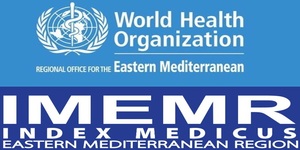Association of the blood groups with mostly public Diseases
DOI:
https://doi.org/10.36321/kjns.vi20211.471Keywords:
blood groupAbstract
The ABO blood group system is identified in 1900. Its principle that antigens as sugars physically exposed on the exterior of red blood cells *RBCs* differ between individuals, who have immunological tolerance only toward what occurs in their own bodies. As a result, many humans express isoantibodies-antibodies against isoantigens, natural components present in the bodies of other members of the same species but not themselves. Isoantibodies may be present against the A and/or B antigens in people who do not themselves have the same antigens in their own blood. These antibodies act as haemagglutinins, which cause blood cells to clump and break apart if they carry the foreign antigens, because A and B antigens are chemically modified of a precursor of that is also present in type O individuals, people with type A and B antigens can accept blood of type O individuals; identification of ABO and Rh gene frequencies among human populations has various benefits in transfusion medicine, transplantation and disease risk. The food, bacterial, viral, or plant antigens have epitopes similar enough to A and B glycoprotein antigens lead to create antibodies in the first years of life, Anti-A antibodies are originate of immune response towards influenza virus, Anti-B antibodies are originate of antibodies produced against Gram-negative bacteria.
The ABO antigen is expressed on the von Willebrand factor (vWF) glycoprotein which participates in control of bleeding; individuals with group O predisposes to bleeding as 30% of the total genetic variation due to this group normally have significantly lower plasma levels of vWF (and Factor VIII) than other blood groups. The individuals with A1 AB, and B blood groups have a 14% reduced risk of squamous cell carcinoma; B antigen links with increased risk of ovarian cancer; type O blood is associated with a reduced risk of pancreatic cancer but increased risk of peptic ulcer and infection with cholera while gastric cancer has reported to be more common in blood group A especially in patient with Helicobacter pylori infection. The blood types A and AB are associated with an increased risk of nasopharyngeal carcinoma; in 2019, a recently evidence showed a higher risk for renal cell cancer was found in non-O blood group women, but not in men. Many studies indicate the individuals with group A and B are less likely to have Diabetes Mellitus than group AB.
Downloads
Downloads
Published
How to Cite
Issue
Section
License
Copyright (c) 2021 Nagham Ghafel

This work is licensed under a Creative Commons Attribution 4.0 International License.













